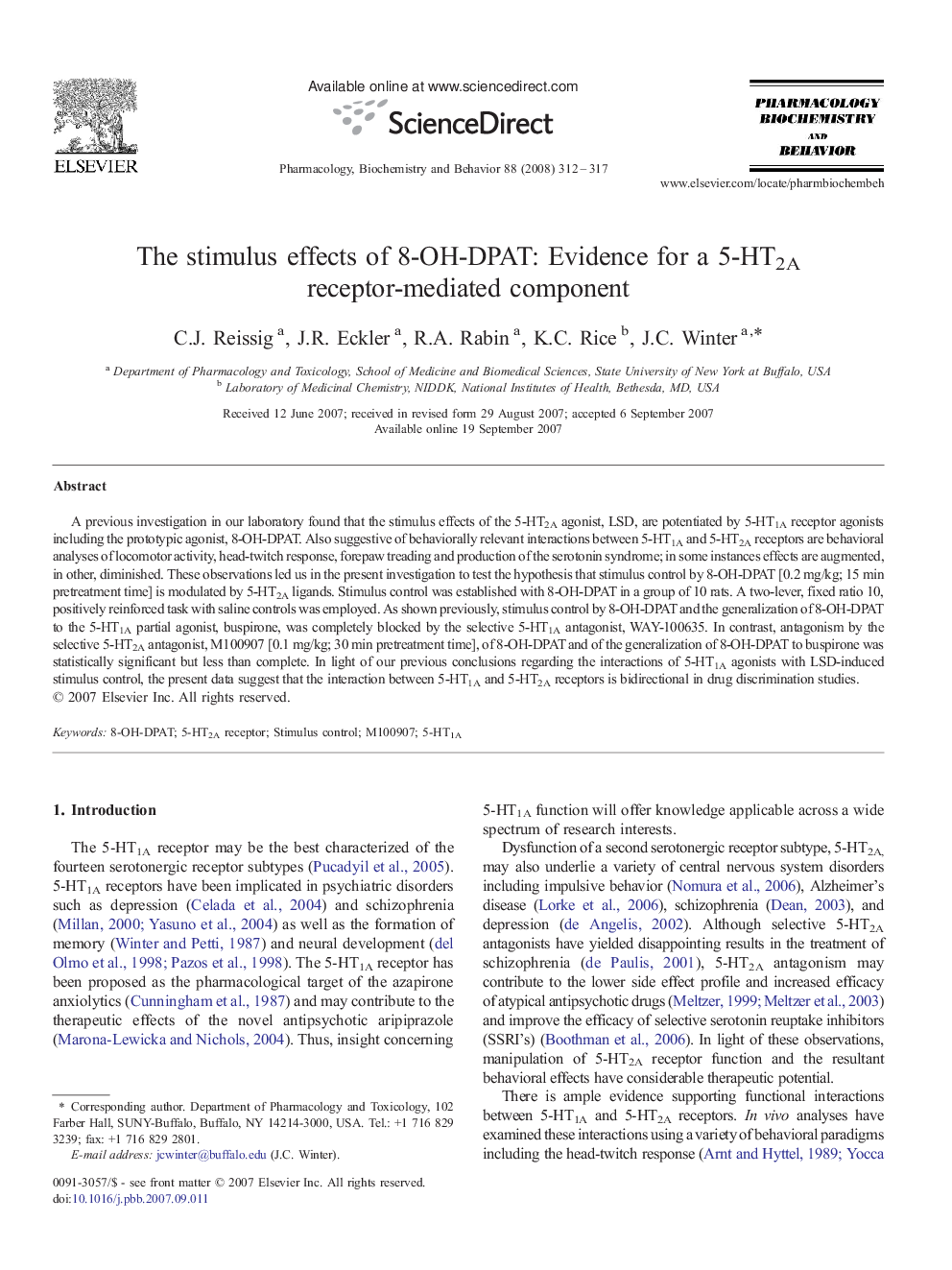| Article ID | Journal | Published Year | Pages | File Type |
|---|---|---|---|---|
| 2013648 | Pharmacology Biochemistry and Behavior | 2008 | 6 Pages |
A previous investigation in our laboratory found that the stimulus effects of the 5-HT2A agonist, LSD, are potentiated by 5-HT1A receptor agonists including the prototypic agonist, 8-OH-DPAT. Also suggestive of behaviorally relevant interactions between 5-HT1A and 5-HT2A receptors are behavioral analyses of locomotor activity, head-twitch response, forepaw treading and production of the serotonin syndrome; in some instances effects are augmented, in other, diminished. These observations led us in the present investigation to test the hypothesis that stimulus control by 8-OH-DPAT [0.2 mg/kg; 15 min pretreatment time] is modulated by 5-HT2A ligands. Stimulus control was established with 8-OH-DPAT in a group of 10 rats. A two-lever, fixed ratio 10, positively reinforced task with saline controls was employed. As shown previously, stimulus control by 8-OH-DPAT and the generalization of 8-OH-DPAT to the 5-HT1A partial agonist, buspirone, was completely blocked by the selective 5-HT1A antagonist, WAY-100635. In contrast, antagonism by the selective 5-HT2A antagonist, M100907 [0.1 mg/kg; 30 min pretreatment time], of 8-OH-DPAT and of the generalization of 8-OH-DPAT to buspirone was statistically significant but less than complete. In light of our previous conclusions regarding the interactions of 5-HT1A agonists with LSD-induced stimulus control, the present data suggest that the interaction between 5-HT1A and 5-HT2A receptors is bidirectional in drug discrimination studies.
